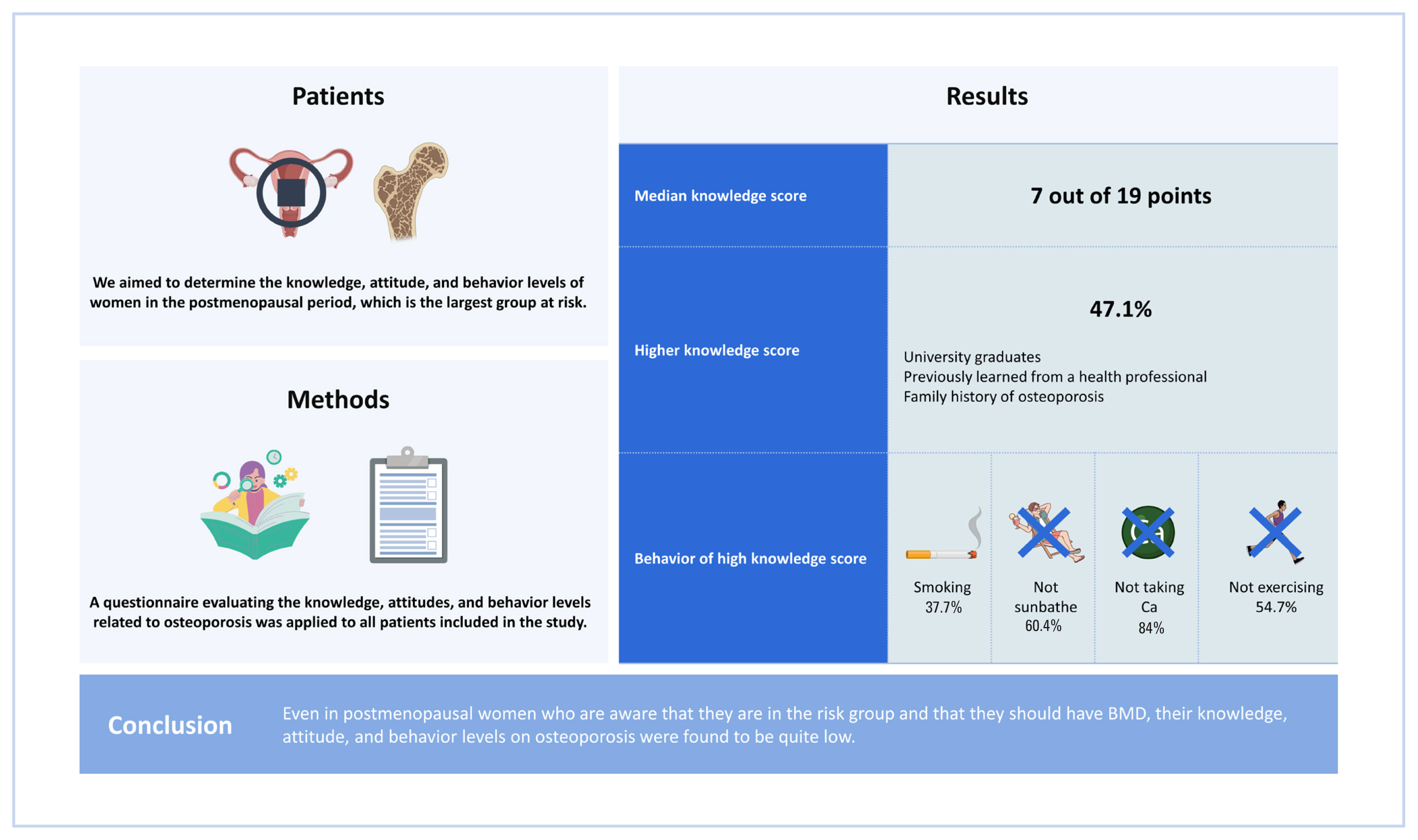2. Porter JL, Varacallo M. Osteoporosis. In: Aboubakr S, Abu-Ghosh A, Sedeh PA, et al., editors. StatPearls. Treasure Island, FL: StatPearls Publishing; 2023. p.NBK441901.
3. Salari N, Ghasemi H, Mohammadi L, et al. The global prevalence of osteoporosis in the world: a comprehensive systematic review and meta-analysis. J Orthop Surg Res 2021;16:609.
https://doi.org/10.1186/s13018-021-02772-0.



5. Guzon-Illescas O, Perez Fernandez E, Crespí Villarias N, et al. Mortality after osteoporotic hip fracture: incidence, trends, and associated factors. J Orthop Surg Res 2019;14:203.
https://doi.org/10.1186/s13018-019-1226-6.



6. Kanis JA, McCloskey EV, Johansson H, et al. European guidance for the diagnosis and management of osteoporosis in postmenopausal women. Osteoporos Int 2013;24:23-57.
https://doi.org/10.1007/s00198-012-2074-y.



7. Williams C, Sapra A. Osteoporosis markers. In: Aboubakr S, Abu-Ghosh A, Sedeh PA, et al., editors. StatPearls. Treasure Island, FL: StatPearls Publishing; 2023. p.NBK559306.
8. Rashki Kemmak A, Rezapour A, Jahangiri R, et al. Economic burden of osteoporosis in the world: a systematic review. Med J Islam Repub Iran 2020;34:154.
https://doi.org/10.34171/mjiri.34.154.



9. Akyol Y, Ulus Y, Bilgici A, et al. The comparison of knowledge level and awareness of osteoporosis between premenopausal and postmenopausal women. Turkish J Osteoporos 2020;26:10-8.
https://doi.org/10.4274/tod.galenos.2019.46320.

10. Altın E, Karadeniz B, Türkyön F. The comparison of knowledge level and awareness of osteoporosis between women and men. Turkish J Osteoporos 2014;20:98-103.
https://doi.org/10.4274/tod.42650.

11. Wáng YXJ, Xiao BH. Estimations of bone mineral density defined osteoporosis prevalence and cutpoint T-score for defining osteoporosis among older Chinese population: a framework based on relative fragility fracture risks. Quant Imaging Med Surg 2022;12:4346-60.
https://doi.org/10.21037/qims-22-281.



12. Senthilraja M, Cherian KE, Jebasingh FK, et al. Osteoporosis knowledge and beliefs among postmenopausal women: a cross-sectional study from a teaching hospital in southern India. J Family Med Prim Care 2019;8:1374-8.
https://doi.org/10.4103/jfmpc.jfmpc_95_19.

13. Ahmadieh H, Basho A, Chehade A, et al. Perception of peri-menopausal and postmenopausal Lebanese women on osteoporosis: a cross-sectional study. J Clin Transl Endocrinol 2018;14:19-24.
https://doi.org/10.1016/j.jcte.2018.10.001.



14. Sitati FC, Obimbo MM, Gichangi P. Knowledge and beliefs on osteoporosis among African postmenopausal women in a Kenyan semi-rural county of kiambu. J Bone Metab 2021;28:91-8.
https://doi.org/10.11005/jbm.2021.28.1.91.



16. Koç A, Aypak C, Yıkılkan H, et al. Knowledge, attitude and behavior levels about osteoporosis among 18-35 years old women. Turkish J Osteoporos 2016;22:11-6.
https://doi.org/10.4274/tod.03274.

17. Chan CY, Subramaniam S, Chin KY, et al. Knowledge, beliefs, dietary, and lifestyle practices related to bone health among middle-aged and elderly Chinese in klang valley, Malaysia. Int J Environ Res Public Health 2019;16:1787.
https://doi.org/10.3390/ijerph16101787.



18. Sava M, Tseng LY, Valderrama M, et al. Osteoporosis knowledge and health beliefs among female community leaders in Peru. Womens Health Rep (New Rochelle) 2020;1:47-54.
https://doi.org/10.1089/whr.2019.0005.



19. Rundasa DT, Ayisa AA, Mekonen EG. Knowledge, health belief, and associated factors towards the prevention of osteoporosis among post-menopausal women in Metu Town, southwest Ethiopia: a community-based cross-sectional study. Int J Orthop Trauma Nurs 2022;45:100905.
https://doi.org/10.1016/j.ijotn.2021.100905.


20. Tabor E, Kuźniewicz R, Zagórski P, et al. The relationship of knowledge of osteoporosis and bone health in postmenopausal women in silesia osteo active study. J Clin Densitom 2018;21:98-104.
https://doi.org/10.1016/j.jocd.2016.08.005.


21. Proia P, Amato A, Drid P, et al. The impact of diet and physical activity on bone health in children and adolescents. Front Endocrinol (Lausanne) 2021;12:704647.
https://doi.org/10.3389/fendo.2021.704647.



23. Zhao R, Zhang M, Zhang Q. The effectiveness of combined exercise interventions for preventing postmenopausal bone loss: a systematic review and meta-analysis. J Orthop Sports Phys Ther 2017;47:241-51.
https://doi.org/10.2519/jospt.2017.6969.


24. Vita F, Gangemi S, Pioggia G, et al. Physical activity and post-transcriptional regulation of aging decay: modulation of pathways in postmenopausal osteoporosis. Medicina (Kaunas) 2022;58:767.
https://doi.org/10.3390/medicina58060767.



25. Thakur P, Kuriakose C, Cherian KE, et al. Knowledge gap regarding osteoporosis among medical professionals in Southern India. J Eval Clin Pract 2020;26:272-80.
https://doi.org/10.1111/jep.13164.


26. Goh M, Nguyen HH, Khan NN, et al. Identifying and addressing osteoporosis knowledge gaps in women with premature ovarian insufficiency and early menopause: a mixed-methods study. Clin Endocrinol (Oxf) 2019;91:498-507.
https://doi.org/10.1111/cen.14049.















 PDF Links
PDF Links PubReader
PubReader ePub Link
ePub Link Full text via DOI
Full text via DOI Download Citation
Download Citation Print
Print



